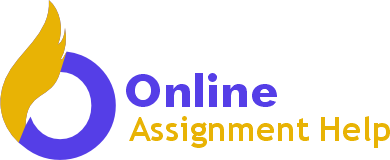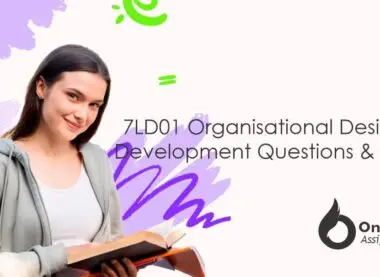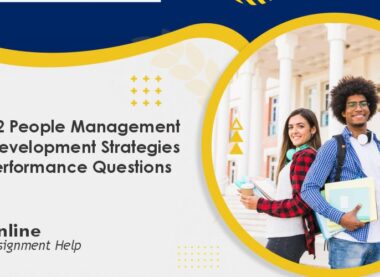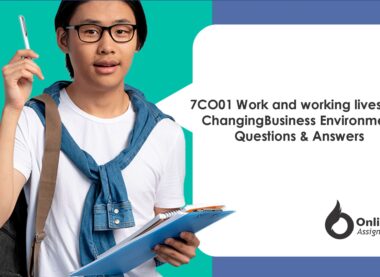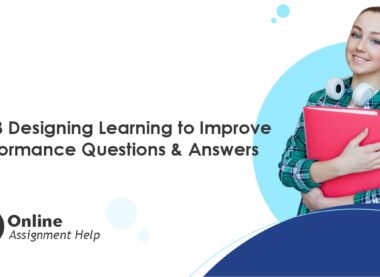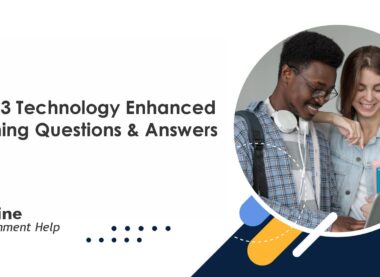Table of Contents
7CO03 Personal Effectiveness, Ethics and Business Acumen Questions & Answers
AC 1.1 Ethical Decision-Making at OneSavings Bank
Introduction
As a human resource practitioner at OneSavings Bank, a financial institution with a culture and commitment to high ethical standards, I have experiences that demand conscious consideration of the different ethical views. This essay looks into an experience while working with the bank, where I was supposed to make a responsible decision in balancing the different ethical perspectives. The analysis will be structured using the STAR approach, underpinned by some relevant literature about ethics and decision-making.
Situation
The case epitomises one senior employee who leaked confidential client information to a third party, violating the bank’s confidentiality policy. According to the employee, this was not intentional; rather, it was to assist a family member from a bad financial state. This situation presented a significant ethical dilemma, requiring a decision considering both the breach of trust and the employee’s intentions.
Task
My task was to determine the appropriate course of action. The decision had to be made concerning the bank’s commitment to ethical practice and the employee’s past conduct and intentions. This, in making the evaluation, involved looking at the situation from different ethical perspectives: deontological (duty-based), consequentialism (outcome-based), and virtue (character-based).
Action
Deontological Ethics
Deontology is based on the belief that specific actions are inherently right or wrong, independent of their outcomes (Udayakumar et al., 2021). Under deontological reasoning, the employee’s action was a fundamental violation of the bank’s confidentiality policy, which is at the core of the duty to the client’s trust. The duty-based approach to ethics holds that it is a matter of absolute duty to respect client confidentiality; hence, breaching client confidentiality under any set of circumstances could not be excused, regardless of the employee’s intent (Gawronski and Beer, 2017). So, this strongly suggested that disciplinary action was called for to support the integrity of the bank’s policies and to make a point by sending a clear message to the employees regarding adherence to ethical duties.
Consequentialism
Consequentialism deals with the consequences of actions, not the actions themselves (Andersen, 2022). In this perspective, I had to consider the consequences that could have resulted from the breach of confidentiality by the employee. Such adverse consequences included the loss of trust among clients, damage to the bank’s reputation, and associated legal actions. Under consequentialism, these risks need to be weighed against the benefits intended to be derived from the employee’s action (Andrić, 2017). Although the employee’s motivation to help a family member was commendable, the potential harm to the bank and its clients outweighed these personal benefits. This viewpoint strengthened the belief in developing a firm action to reduce the risks as much as possible and prevent future breaches.
Virtue Ethics
Virtue ethics shifts the focus from actions and consequences to the character and intentions of the person performing the act (Russell, 2023). In this case, the employee had never been a problem previously, and his action was prompted by his desire to help a family member in need. Virtue ethics would recommend that, although the breach was a grave offence, regard must be made to his intentions and previous behaviour while deciding on disciplinary action. Accordingly, this perspective harboured a more compassionate approach by recognising the employee’s character in dealing with the severity of the breach (Tsoukas, 2018).
Integrating Perspectives
I consulted with the legal department, the employee’s manager, and the compliance team to make a balanced decision. Thereupon, these consultations helped clarify this matter further and assuredly reaffirmed the rationale of considering the employee while being mindful that the bank’s values were followed. Indeed, this supported me in establishing the approach to guidance necessary for making a decision. I finally went for a formal warning letter and mandatory confidentiality and ethical decision-making retraining. In doing this, I addressed the breach but still allowed the employee to reflect and improve.
Result
The decision to issue a formal warning and require retraining significantly and positively impacted both the employee and the broader organisation.
Impact on the Employee
The formal warning to the employee was a potent and specific reminder regarding the bank’s confidentiality policies. Retraining gave him a chance to reflect on his actions and thus more appropriately understand the ethical responsibilities associated with his role. Not only did this approach solve the immediate breach, but it also helped realign the employee’s behaviour according to the bank’s values and reduced the risk of ethical lapses in the future.
Impact on the Organization
From an organisational point of view, this act, on the part of the bank, reaffirmed its commitment to high ethical standards and the protection of client trust. By addressing the breach in a fair yet firm manner, the bank demonstrated that it takes its ethical responsibilities seriously, which helped maintain client confidence and protect its reputation. The retraining initiative also served as a learning opportunity for the entire team, raising awareness of confidentiality issues, ethics, and decision-making throughout the organisation (Mogea, 2023).
Critical Evaluation
The decision-making process in this scenario demonstrated the importance of integrating multiple ethical perspectives to arrive at a balanced and responsible decision. Considering deontological ethics, consequentialism, and virtue ethics allowed me to come up with a response tailored to the situation while conforming to the bank’s expectations. Such nuance in approach resolves the immediate issue and cultivates a culture of ethical awareness within the organisation.
Conclusion
In conclusion, the process leading to the ethical decision at OneSavings Bank underlined the necessity to consider different ethical perspectives in making responsible decisions. It was an endeavour where duty and outcomes needed to be considered in light of character. I remained loyal to the bank’s ethical standards while recognising the employee’s good intentions. This experience has reinforced the need for a thoughtful and strategic approach to ethics in HR, where the impact of decisions extends beyond the individual case to influence the broader organisational culture.
AC 2.1 Reflecting on Self-Awareness and Self-Management for Organizational Success
Introduction
Self-awareness and self-management are critical in personal and professional development, especially in the dynamic organisational context. Throughout my stint as an HR professional at OneSavings Bank, some instances have sharply depicted these qualities as crucial propellers of managerial success and career development. The subsequent essay will discuss specific cases in which higher-than-usual levels of self-awareness and self-management led to a better realisation of outcomes for the organisation and my professional growth.
Self-Awareness
Situation
During a significant restructuring at OneSavings Bank, the HR department was tasked with overseeing the transition, which included staff realignment, communication of new roles, and managing employee concerns. In this critical period, I was asked to project-manage a communication strategy to ensure all employees understood the changes occurring and cared for throughout. Given the high-pressure nature—a tight timeline with quite emotional responses from employees—the need to manage my role effectively couldn’t be more paramount.
Task
My task was to develop and implement a communication plan whereby the concerns of over 500 employees would be addressed, ensuring that the message being communicated remained consistent, clear, and supportive. This required strategic thinking and a deep understanding of my strengths and weaknesses, particularly in handling stress and managing time effectively.
Action
Knowing that under stress, I became overly task-oriented at the potential expense of interpersonal communication, I worked hard to become more self-aware. I actively checked on my stress levels and reactions, keeping myself quite literally grounded by using mindfulness techniques and reflective journaling. Further, I would seek feedback from others around me about whether or not I was striking this balance between tasks and people (Goleman, 2018).
Time management was achieved through prioritisation, depending on urgency and importance, helped by tools like the Eisenhower Matrix (Dmytryshyn and Goran, 2022). I also scheduled time strictly for team members’ interactions to keep myself open and supportive. This required constant self-control and readjustment since I had to know precisely whether my stressful condition influenced my communication style or decisions (Thomas, 2021).
Result
Therefore, the increased self-awareness and intentional self-regulation culminated in a communication strategy that was effective and well-received by the employees. Feedback reported that the employees were informed, supported, and respected during the restructuring process, reducing change resistance and maintaining morale. This, in turn, ensured a smooth transition with sustainable productivity levels during challenging times at the organisation
al level; it boosted my confidence in my case management skills amidst any high-pressure situation. Actually, one of the main reasons for my promotion to the HR department afterwards was this experience. The experience also highlighted areas for improvement, such as the need to refine my stress management techniques further to ensure sustained effectiveness in future high-pressure scenarios.
Self-Improvement
Situation
A few years ago, I realised how I managed my time affected my productivity and work-life balance. Working all night just to beat the deadlines became the norm, which had a burnout effect on me, diminishing the quality of my work. The realisation was a wake-up call that I needed to take serious action toward improving my time management skills.
Task
The task at hand was to overhaul my approach to time management to improve productivity, quality of work, and overall well-being. Therefore, The challenge was learning new approaches through time management, mastering them, and applying them to achieve tangible performance and work-life balance results.
Action
I started with a proper assessment of how I used my time. I kept a record of my activities for one week. I saw the trends leading to inefficiency: multitasking, frequent interruptions, and an incredibly reactive approach to e-mails.
Based on this analysis, I implemented several time management strategies. I structured my working day according to the Pomodoro Technique: periods of focused work were interspersed with short breaks (Biwer et al., 2023). Clear boundaries were established between work and nonwork time, and a firm end to the day was established to avoid burnout. Additionally, I prioritised the Pareto Principle, focusing on the 20% of tasks that would yield 80% of the results (Kheybari et al., 2019).
I also made a conscious effort towards better delegation—empowering my team to take ownership. This not only lightened my workload but also contributed to their professional development.
Result
These changes made a significant difference in improving my productivity and well-being. Better time management helped me to become more effective while doing tasks, as it gave me better output and satisfaction that earned an acknowledgement from the senior management. This has led to greater trust and additional responsibilities, furthering my career progression.
By setting clear boundaries between work and personal life, I stayed calm and energised to a more sustainable and balanced approach to my work. This improvement in my well-being translated into better performance at work, contributing to the HR department’s and the organisation’s success in this experience. I recognise improvement in time management to a great extent; however, it is a trait whose development in me still requires improvement. For example, training in delegation techniques will help me improve my leadership qualities and utilise multiple strengths more significantly than I currently do.
Conclusion
As such, self-awareness and self-management present essential skills that drive personal and organisational from experience at OneSavings Bank; one thing that I have learned is the importance of being self-aware and deliberately managing myself so that I can drive good outcomes for the organisation while at the same time developing my career. That said, improvement is a continuous process, so refining these skills occasionally could not miss the point. With these capabilities and their further development, I can contribute much more to the success of OneSavings Bank and my tenure and experience within the bank.
AC 3.1 Demonstrating Curiosity and Passion for Deep Learning
Introduction
In the dynamic field of HR, one has to upgrade continuously to stay ahead of trends and meet organisational work at OneSavings Bank enables me to demonstrate curiosity, share good practices, and put feedback into action to enhance my skills in contributing to the success of this organisation
Demonstrating Curiosity and Embracing Learning Opportunities.
Situation
When OneSavings Bank decided to implement a new human resource information system (HRIS), the change was quite radical to our current processes. The new system promised efficiency and accuracy but had a steep learning curve to understand what capabilities it brought along. Realising I needed to get up to speed on this system as quickly as possible, I took the lead and learned it thoroughly.
Task
My core assignment was to learn the HRIS thoroughly and find ways to optimise within the organisation involved, mastering the technical aspects and knowing how the system can help our HR processes, enhance efficiency, and add strategic value. In addition, I needed to be ready to train my colleagues so that the HR team could use this new tool effectively.
Action
Because of deep curiosity and a wish to innovate, I embarked on learning as much about the HRIS as possible (Burda et al., 2018). I attended vendor-led training, online webinars, and self-study support so that I could get my hands on learning more about the system’s functionalities. That continued as I also networked with HR professionals working for other organisations, like Aurora and Dollar Bank, that had implemented similar systems, seeking to understand best practices and challenges that could emanate.
I volunteered to lead a pilot project whereby the HRIS would be tested in a controlled environment before rollout. It gave me hands-on familiarity with the product because I could test various configurations and work out the best workflows. My approach was methodical—I tested multiple scenarios, documented my findings, and developed a set of best practices tailored to our organization.
Result.
The pilot project was a resounding success. This exercise taught me how to effectively streamline the full-scale implementation so that the system would be tailor-made to our needs. In-depth exposure to the HRIS enabled me to meaningfully contribute toward the tailoring involved in using the HRIS to support some of our strategic goals and objectives for improvement in efficiency and making more informed decisions in matters related to human resources (Sadiq et al., 2022).
Sharing Good Practice with Others
Situation
After successfully implementing HRIS, it became apparent that this system would significantly improve how we managed team member performance and development. However, there was some initial reluctance from a few of my colleagues to start using the new technology, and instead, they fell back on more familiar ways of doing things. Recognising the system to bring maximum benefits required wide adoption; I saw the need to share good practices I had developed and encourage my peers to take up this new change.
Task
My task was to share good practices in learning and innovation within the HR team, which I had learned during the implementation period of HRIS. This included illustrating how to use the system, addressing problems, and giving valuable tips on using new technology in everyday work. All this was to make sure everybody could use this system to improve the department’s general efficiency and accuracy of data.
Action
These were achieved through several interactive workshops and informal training sessions (Muijs and Reynolds, 2017). In these sessions, I applied my experience with the HRIS to demonstrate how it could be leveraged to facilitate specific tasks—such as performance appraisals and employee development tracking. I made sure to bring content relevant to address my colleagues’ particular challenges and needs, making the training relevant and engaging.
Result
These workshops and training worked magic; the rate of adoption of the HRIS increased tremendously throughout the department. As my colleagues became more and more comfortable with the system, marked improvements in efficiency and data accuracy started to show up. This reliability in reporting and insights proved very useful for human resources operations.
Using Feedback to Improve
Situation
After the full implementation of the HRIS, feedback from a senior manager was that we could still get more out of the system regarding analytics to provide greater insight into employee performance and engagement. This encouraged me to reflect on how we might further enhance the impact of the system toward our strategic goals.
Task
The task was to respond to feedback by deepening my understanding of the HRIS’s analytics features and how these tools could be used to support strategic HR initiatives. That meant understanding more of the technical aspects of the system and how one could interpret data into meaningful insights that may inform decision-making at the executive level.
Action
To address this, I pursued training in analytics training within the HRIS and then via additional data analytics and interpretation courses. This new knowledge was implemented by developing custom dashboards within the HRIS, through which key performance indicators (KPIs) relevant to team member engagement, turnover, and productivity could be tracked. I worked with finance and operations to ensure the collected data points aligned with the organisation’s goals.
Result
Feedback led to significant improvements in how we utilised strategic HR initiatives. These custom dashboards became a handy tool for senior management to analyse trends and decision-making. This increased the strategic impact of the HR function and proved my skills in taking constructive feedback and bringing out real change.
This experience reiterated that being open to suggestions and looking for a learning curve at every point is essential. It also contributed to my reputation as a forward-thinking HR professional committed to leveraging technology to drive organisational success.
Conclusion
My experiences at OneSavings Bank have demonstrated my curiosity and interest in deep learning, commitment to sharing good practice, and openness to feedback. These qualities have contributed to my personal growth and the organisation’s success. I continuously seek the opportunity to learn from others, innovate, and collaborate; this has been meaningful in driving change toward realising the strategic goals of OneSavings Bank.
AC 3.1 Demonstrating Curiosity and Passion for Deep Learning
Introduction
In the dynamic field of HR, one has to upgrade continuously to stay ahead of trends and meet organisational work at OneSavings Bank enables me to demonstrate curiosity, share good practices, and put feedback into action to enhance my skills in contributing to the success of this organisation
Demonstrating Curiosity and Embracing Learning Opportunities.
Situation
When OneSavings Bank decided to implement a new human resource information system (HRIS), the change was quite radical to our current processes. The new system promised efficiency and accuracy but had a steep learning curve to understand what capabilities it brought along. Realising I needed to get up to speed on this system as quickly as possible, I took the lead and learned it thoroughly.
Task
My core assignment was to learn the HRIS thoroughly and find ways to optimise within the organisation involved, mastering the technical aspects and knowing how the system can help our HR processes, enhance efficiency, and add strategic value. In addition, I needed to be ready to train my colleagues so that the HR team could use this new tool effectively.
Action
Because of deep curiosity and a wish to innovate, I embarked on learning as much about the HRIS as possible (Burda et al., 2018). I attended vendor-led training, online webinars, and self-study support so that I could get my hands on learning more about the system’s functionalities. That continued as I also networked with HR professionals working for other organisations, like Aurora and Dollar Bank, that had implemented similar systems, seeking to understand best practices and challenges that could emanate.
I volunteered to lead a pilot project whereby the HRIS would be tested in a controlled environment before rollout. It gave me hands-on familiarity with the product because I could test various configurations and work out the best workflows. My approach was methodical—I tested multiple scenarios, documented my findings, and developed a set of best practices tailored to our organization.
Result.
The pilot project was a resounding success. This exercise taught me how to effectively streamline the full-scale implementation so that the system would be tailor-made to our needs. In-depth exposure to the HRIS enabled me to meaningfully contribute toward the tailoring involved in using the HRIS to support some of our strategic goals and objectives for improvement in efficiency and making more informed decisions in matters related to human resources (Sadiq et al., 2022).
Sharing Good Practice with Others
Situation
After successfully implementing HRIS, it became apparent that this system would significantly improve how we managed team member performance and development. However, there was some initial reluctance from a few of my colleagues to start using the new technology, and instead, they fell back on more familiar ways of doing things. Recognising the system to bring maximum benefits required wide adoption; I saw the need to share good practices I had developed and encourage my peers to take up this new change.
Task
My task was to share good practices in learning and innovation within the HR team, which I had learned during the implementation period of HRIS. This included illustrating how to use the system, addressing problems, and giving valuable tips on using new technology in everyday work. All this was to make sure everybody could use this system to improve the department’s general efficiency and accuracy of data.
Action
These were achieved through several interactive workshops and informal training sessions (Muijs and Reynolds, 2017). In these sessions, I applied my experience with the HRIS to demonstrate how it could be leveraged to facilitate specific tasks—such as performance appraisals and employee development tracking. I made sure to bring content relevant to address my colleagues’ particular challenges and needs, making the training relevant and engaging.
Result
These workshops and training worked magic; the rate of adoption of the HRIS increased tremendously throughout the department. As my colleagues became more and more comfortable with the system, marked improvements in efficiency and data accuracy started to show up. This reliability in reporting and insights proved very useful for human resources operations.
Using Feedback to Improve
Situation
After the full implementation of the HRIS, feedback from a senior manager was that we could still get more out of the system regarding analytics to provide greater insight into employee performance and engagement. This encouraged me to reflect on how we might further enhance the impact of the system toward our strategic goals.
Task
The task was to respond to feedback by deepening my understanding of the HRIS’s analytics features and how these tools could be used to support strategic HR initiatives. That meant understanding more of the technical aspects of the system and how one could interpret data into meaningful insights that may inform decision-making at the executive level.
Action
To address this, I pursued training in analytics training within the HRIS and then via additional data analytics and interpretation courses. This new knowledge was implemented by developing custom dashboards within the HRIS, through which key performance indicators (KPIs) relevant to team member engagement, turnover, and productivity could be tracked. I worked with finance and operations to ensure the collected data points aligned with the organisation’s goals.
Result
Feedback led to significant improvements in how we utilised strategic HR initiatives. These custom dashboards became a handy tool for senior management to analyse trends and decision-making. This increased the strategic impact of the HR function and proved my skills in taking constructive feedback and bringing out real change.
This experience reiterated that being open to suggestions and looking for a learning curve at every point is essential. It also contributed to my reputation as a forward-thinking HR professional committed to leveraging technology to drive organisational success.
Conclusion
My experiences at OneSavings Bank have demonstrated my curiosity and interest in deep learning, commitment to sharing good practice, and openness to feedback. These qualities have contributed to my personal growth and the organisation’s success. I continuously seek the opportunity to learn from others, innovate, and collaborate; this has been meaningful in driving change toward realising the strategic goals of OneSavings Bank.
AC 4.1 Assessing Approaches to Decision-Making on Complex Issues and Taking Ownership of Mistakes
Introduction
Decision-making in HR at OneSavings Bank refers to fighting out complex issues, managing risks, and owning results. The following section attempts to account for all those instances where I have worked on these challenges, emphasising decision-making, risk management, and accountability.
Handling Complex Issues in Decision-Making
Situation
In this case, I was asked to lead a team of HR professionals on decisions relating to role consolidations and redundancies at OneSavings Bank. This instantly complicated the situation since it immediately set this major restructuring program off to a flying start with a host of different stakeholder needs impinging on it—including driving operational efficiencies while keeping morale high and remaining legally compliant.
Task
My task was to ensure this restructuring process was conducted fairly and transparently and chiefly in the best interests of setting strategic goals for the bank, bringing a minimum negative impact on the employee side.
Action
I used the Vroom-Yetton-Jago Decision Model to guide me in seeking full involvement from senior management and heads of departments in the decision-making processes (Vignesh, 2020). Assessment of risks, impending legal hazards, and morale challenges was captured. To mitigate these risks, I worked with the legal counsel for compliance and set a clear communication plan to back up the affected employees.
Result
Though gruelling, the restructuring process was carried out with minimum disturbance. An effective risk management system coupled with the engaged participation of critical stakeholders in the decision-making process helped the bank’s strategic objectives to be met without a dent in the level of trust and morale within the organisation to make a comprehensive set of decisions by considering multiple viewpoints through the consultative approach in such a complex scenario.
Managing Risks in Decision-Making
Situation
OneSavings Bank faced several risks when implementing a new performance management system, including employee resistance and data privacy concerns.
Task
My work was to oversee the implementation while managing these risks effectively for smooth adoption and compliance with data protection regulations.
Action
Given handling these risks, I ensured a comprehensive risk assessment was conducted before the implementation. This involved identifying potential sources of resistance, such as concerns about transparency and fairness regarding the new system and the risks related to data privacy (Forrest et al., 2019). I worked out a comprehensive change management plan with provisions for training sessions to familiarise employees with the new system and its benefits. I collaborated with our Information Technology department to ensure tight data security measures to the best standards possible, ensuring that potential data breach risks could be minimized. I shared the change with all employees and explained their concerns, helping them develop relevant skills and knowledge in using this new system. This proactive approach showed a reaction in reducing resistance and provided a much more orderly transition.
Result
This system was successfully implemented, and simultaneously, its employee adoption reached a high rate without significant privacy concerns. This proactive approach toward risk management contributed to the positive reception of this system and, thus, to the effectiveness of performance management improvement at the bank.
Developing Decision-Making Behaviors in Others
Situation
As part of my role, I was required to develop the decision-making ability of junior HR staff to tackle complex issues and manage risks effectively.
Task
The aim was to develop a program that could equip junior staff with the right skills and confidence to make the right decisions in difficult situations.
Action
I designed workshops on decision-making frameworks, risk management, and real-life case studies (O’Doherty et al., 2017). Particular emphasis was placed on the junior staff to arm them with practices and techniques for analysing situations and making decisions in the associate onus, ensuring alignment with the bank’s objectives. I also designed role-playing exercises that simulate states of difficulty and allow for the development of decision-making skills in risk-free environments.
To reinforce learning, I encouraged the junior staff to take the lead on smaller projects where they could apply these skills in real-world contexts. I provided mentorship and feedback throughout the process, helping them to refine their approach and build confidence.
Result
This development program proved effective, as many improvements were made to the decision-making capabilities of junior staff. They became more confident in tackling complex issues and better equipped with the capacity for structured risk management in their decision-making processes. This has not only improved the general performance of the HR team but also contributed to the bank’s quest to navigate challenges easily. The program also fostered a culture of learning and professional growth for staff within the HR department.
Taking Ownership When Things Go Wrong
During the rollout of a new employee engagement initiative, unforeseen challenges led to lower participation rates and dissatisfaction among some employees.
Task
Being the leader of the initiative, it was upon me to take ownership of what had transpired, identify the issues, and implement corrective measures.
Action
I began with a post-implementation review to delve into the root causes of the issues (Ogunfowora et al., 2021). It was evident in the findings that the communication strategy needed to be stronger, and due to this, there had been the creation of false perceptions regarding the rationale for change and the benefits—besides, the timeline for the rollout needed to be more realistic, adding to the challenges.
I took ownership of the problems and clearly explained them to senior management and the employees. Afterwards, I made a new plan with an improved communication strategy and a new extended timeline. The new timeline allowed me more time for upfront preparation and extensive staff engagement.
Result
The revised initiative was much more successful. Participation rates significantly improved, and feedback from employees was overwhelmingly positive. Taking responsibility for the initial failure and correcting it not only turned around a difficult situation but made it into a very positive one. This experience taught me the importance of accountability in decision-making and the commitment to learning from mistakes to drive improvement.
Conclusion
These experiences demonstrate how I have managed complex issues and risks and developed decision-making abilities in others, with personal ownership of mistakes. Through structured decision-making models, proactive risk management, and a culture of accountability, I drove strategic success for OneSavings Bank. These examples underline the importance of thoughtful, ethical decision-making in HR leadership.
References
Andersen, M.M., 2022. Consequentialism. In Oxford Research Encyclopedia of Politics.
Andrić, V., 2017. Objective consequentialism and the rationales of ‘“Ought” implies “Can”’. Ratio, 30(1), pp.72-87.
Biwer, F., Wiradhany, W., oude Egbrink, M.G. and De Bruin, A.B., 2023. Understanding effort regulation: Comparing ‘Pomodoro’breaks and self‐regulated breaks. British Journal of Educational Psychology, 93, pp.353-367.
Burda, Y., Edwards, H., Pathak, D., Storkey, A., Darrell, T. and Efros, A.A., 2018. Large-scale study of curiosity-driven learning. arXiv preprint arXiv:1808.04355.
Dmytryshyn, M. and Goran, T., 2022. Proposal of an effective time management system. Management: Journal of Contemporary Management Issues, 27(2), pp.283-298.
Forrest, J.Y.L., Nicholls, J., Schimmel, K. and Liu, S., 2019. Managerial decision making: A holistic approach. Springer Nature.
Gawronski, B. and Beer, J.S., 2017. What makes moral dilemma judgments “utilitarian” or “deontological”?. Social Neuroscience, 12(6), pp.626-632.
Goleman, D., 2018. What makes a leader? In Military leadership (pp. 39-52). Routledge.
Kheybari, S., Naji, S.A., Rezaie, F.M. and Salehpour, R., 2019. ABC classification according to Pareto’s principle: a hybrid methodology. Opsearch, 56, pp.539-562.
Mogea, T., 2023. The Importance of Human Resources Training to Improve OrganisationalOrganisationalnce. CENDEKIA: Jurnal Ilmu Sosial, Bahasa dan Pendidikan, 3(2), pp.58-72.
Muijs, D. and Reynolds, D., 2017. Effective teaching: Evidence and practice. Sage.
O’Doherty, J.P., Cockburn, J. and Pauli, W.M., 2017. Learning, reward, and decision making. Annual review of psychology, 68(1), pp.73-100.
Ogunfowora, B., Maerz, A. and Varty, C.T., 2021. How do leaders foster morally courageous behavior in employees? Leader role modeling, moral ownership, and felt obligation. Journal of Organizational Behavior, 42(4), pp.483-503.
Russell, C., 2023. Virtue Ethics. In Global Encyclopedia of Public Administration, Public Policy, and Governance (pp. 13255-13260). Cham: Springer International Publishing.
Sadiq, U., Khan, A.F., Ikhlaq, K. and Mujtaba, B.G., 2022. The impact of information systems on the performance of human resources department. In Strategic Human Resource Management at Tertiary Level (pp. 31-47). River Publishers.
Thomas, N., 2021. Knowing Self, Knowing Others: A Critical Exploration of Self-Awareness and Its Relevance to Leader Effectiveness Across All Levels of the Welsh Public Service. University of South Wales (United Kingdom).
Tsoukas, H., 2018. Strategy and virtue: Developing strategy-as-practice through virtue ethics. Strategic Organization, 16(3), pp.323-351.
Udayakumar, L., Babu, V.S.S. and Babu, V.V.S.S., 2021. Immanuel Kant’s Deontology Theory. IJRAR-International Journal of Research and Analytical Reviews (IJRAR), 8(2), pp.235-243.
Vignesh, M., 2020. Decision making using Vroom-Yetton-Jago model with a practical application. International Journal for Research in Applied Science and Engineering Technology, 8(10), pp.330-337.
